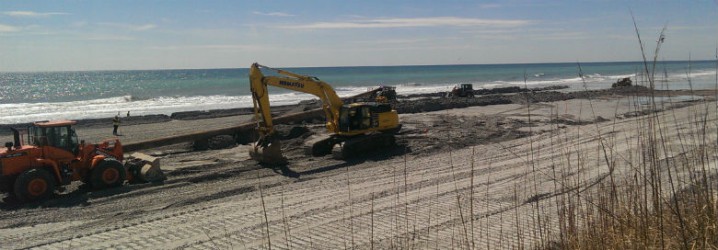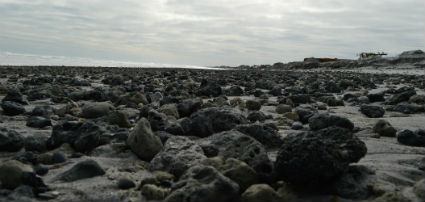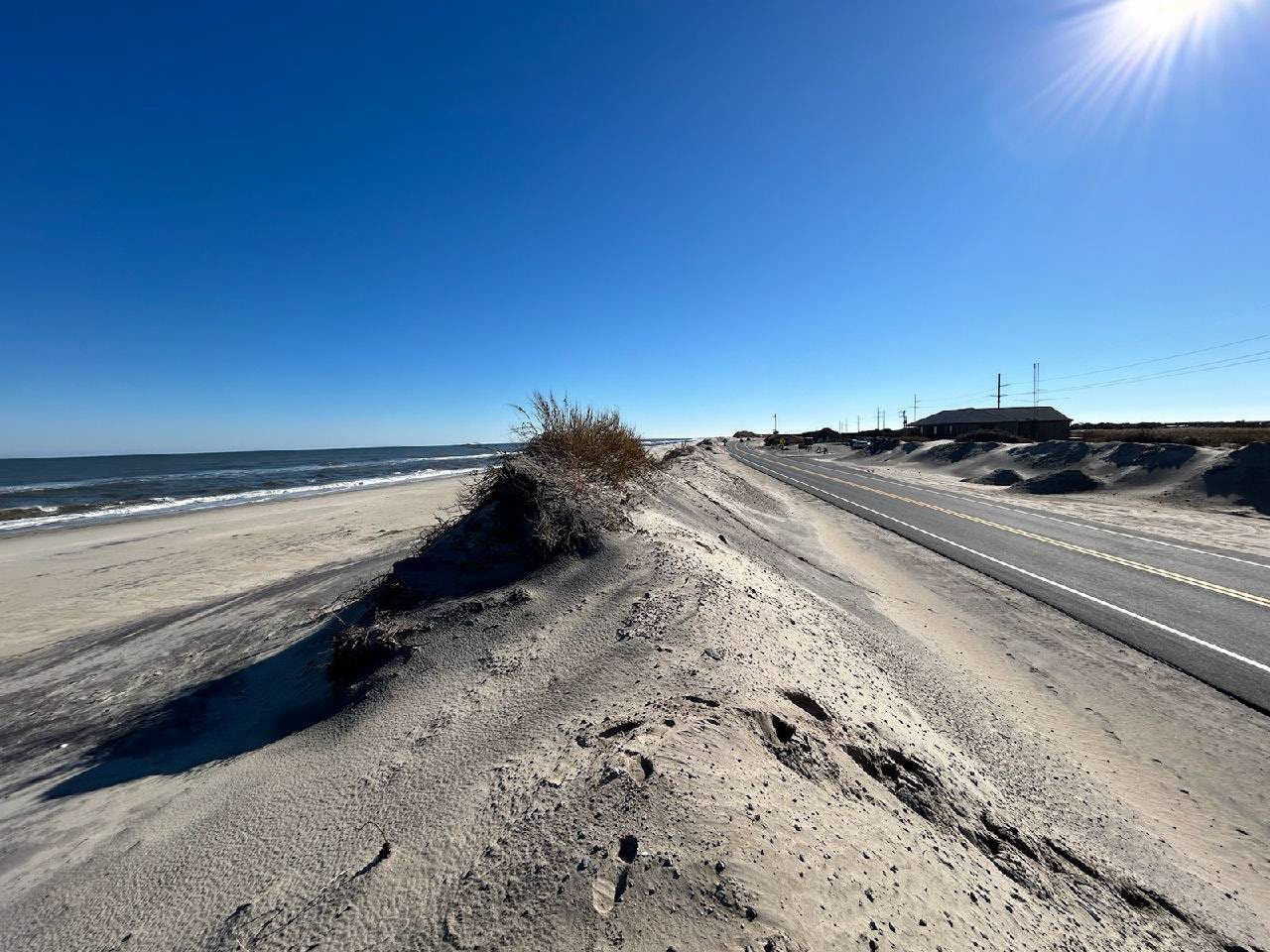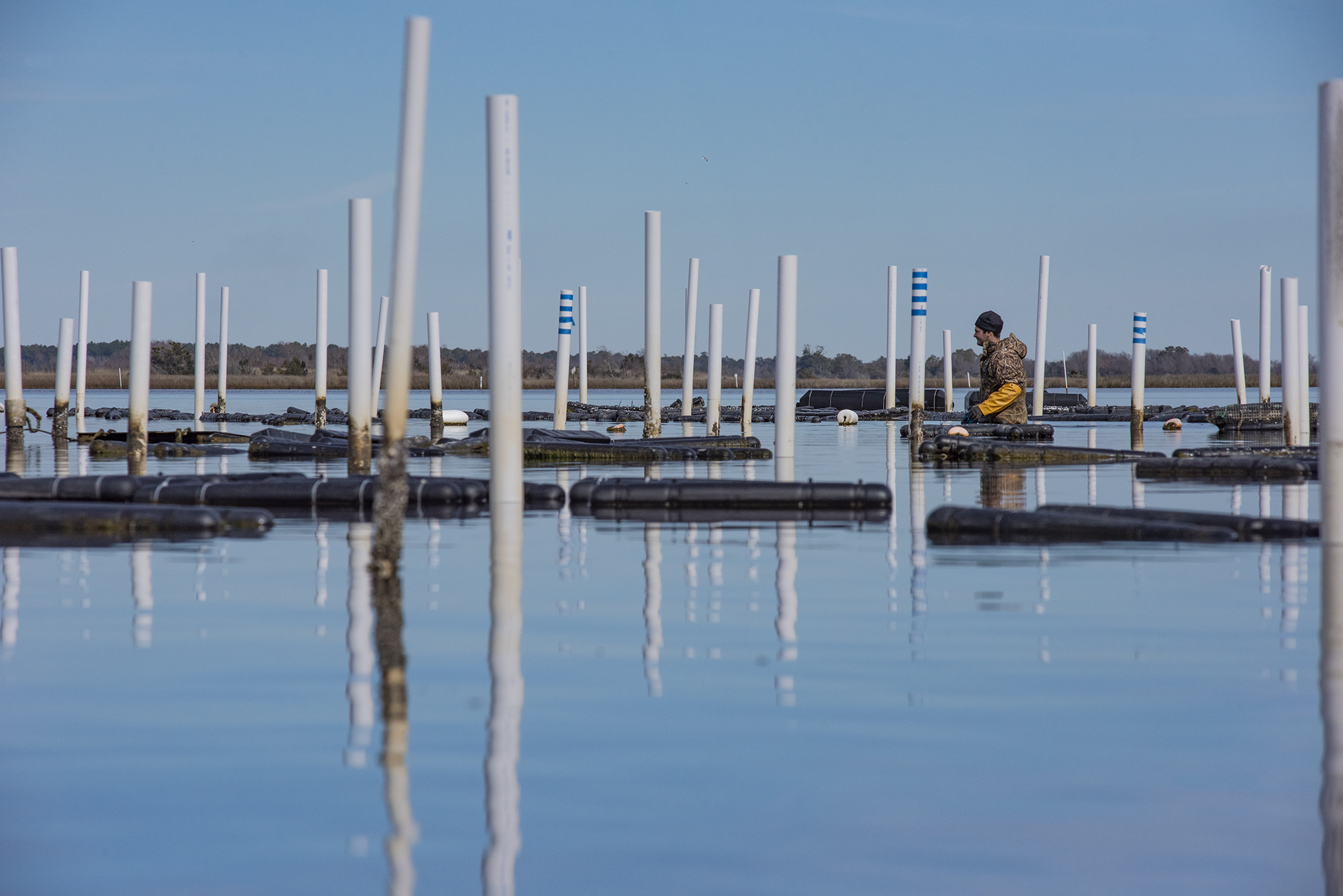NORTH TOPSAIL BEACH – Rocks buried beneath sand being pumped onto the southern end of this town’s beach have created an unsuitable habitat for nesting sea turtles, according to the federal agency responsible for protecting endangered species.
The U.S. Fish and Wildlife Service is calling for North Topsail Beach to do more to remove rocks hidden well below the beach’s surface and prevent additional rocks from littering the surface, including stopping the beach re-nourishment until a better source for the sand is found.
Sponsor Spotlight
If the town doesn’t comply it could be found in violation of the federal Endangered Species Act, a determination that carries stiff penalties and could jeopardize future beach re-nourishment projects. Sea turtles that could nest on the town’s beaches are listed as threatened under the law.
“It’s our opinion the material is not suitable for sea turtle nesting and that the state has determined it does not meet the sediment criteria,” said John Ellis, fish and wildlife biologist with the service’s Raleigh field office.
The town’s 3.5-mile beach re-nourishment project started in December. Early on the sand pumped onto the beach appeared to be fine. Winter storms in January and early February began uncovering tons of rocks that had been inadvertently dredged from the sand source about a half-a-mile off the beach.
Though pumping rocks bigger than three inches onto the beach violates state standards for beach re-nourishment projects, officials at the N.C. Division of Coastal Management, or DCM, have decided not to stop the project or take other enforcement actions because the town has been removing the rocks.
Town, state and federal officials are defending the project, saying that samples from the borrow site indicated the material met the state’s standards and that efforts, including exploring different areas within the offshore site, have been made to try and keep rocks from reaching the beach.
Sponsor Spotlight
State and federal regulatory agencies responsible for overseeing the town’s beach re-nourishment project have been working with the town and its contractor to implement mitigation efforts, including picking up rocks larger than three inches in diameter and installing equipment on the dredge pipes to prevent rocks from reaching the shore, officials with those agencies say.

New Requirements
Fish and Wildlife Service officials met with everyone involved at North Topsail last week. In a March 25 letter to the town following the meeting, the service lists three courses of action North Topsail Beach can take to prevent being found in violation of federal law: Stop operations and search for a new offshore sand source; stop and consult with regulatory agencies to use the same material; or continue pumping but take extra measures to remove the rocks. Those steps include installing a screen on the dredge to prevent more rocks from reaching the shore, installing finer mesh on devices called rock boxes on shore to capture more rocks and remove buried rocks to a depth of 48 inches or the original beach elevation.
The Army Corps of Engineers, which issues federal permits for such projects, should not allow the town to use the current sand source in future projects, according to the letter.
“Should the Corps allow the use of this borrow site in the future, a new biological assessment and biological opinion should be prepared that addresses the true nature of the material in the site,” the letter states.
Officials with DCM, which issues state permits for beach re-nourishment project, and the Corps say they are waiting for a response from the town, where officials there are pressing ahead to carry out the third recommendation: continue pumping but take extra measures to remove the rocks.
“We have a plan to remove the rocks to the depth required by Fish and Wildlife,” Stuart Turille, North Topsail Beach manager, said. “Right now, because the problem manifested primarily when the rocks first came ashore at the north end of the project, we plan to focus on that area. We don’t really anticipate it being an extensive problem once we get past the first 5,000 feet.”
In addition to making changes to the current rock collection and screening methods being used, the town plans to hire an additional crew to remove the rocks at the deeper depth suggested by the service. The rock picker the town is currently using goes to a depth of up to 18 inches.
The rock-picking crew the town plans to contract with was to make a trial run early this week to see how successful the rock removal will be, Turille said last week.
“I know the Fish and Wildlife Service does have some concerns,” said Doug Huggett, DCM’s manager of Major Permits & Consistency. “We certainly acknowledge the importance of those concerns. As long as we believe that they’re making adequate progress in taking remedial action we don’t want to take the rather drastic step of shutting the project down.”
Mickey Sugg, project manager in the corps’ Wilmington district office, said that if the town can’t follow the Fish and Wildlife Service recommendations then the operation may be shut down.
“When we get any kind of recommendations when we’re looking at Section 7 of the Endangered Species Act we’re obligated to uphold that act,” Sugg said.
Threat to Turtles

Section 7 calls on regulatory agencies to ensure the protection of habitat used by endangered species. In this case, Ellis said, the habitat not only affects sea turtles, but shorebirds like the endangered piping plover and redknot.
Sugg said the corps has been in consultation with the service and the N.C. Wildlife Resources Commission since the rocks were initially discovered.
“Once the town saw that the rocks were being placed on the beach, they relocated the dredge within the borrow area and avoided that area where the rocks were being pumped,” he said. “The material, once they relocated the dredge, it appeared to be suitable, but as they moved down the beach it wasn’t noticeable until the rocks were exposed. Keep in mind the whole time we’re coordinating with the U.S. Fish and Wildlife Service and the North Carolina Wildlife Resources Commission and we’re providing them with information so they’re aware of it. It’s not like we told them at the last minute.”
Regulatory agencies signed off on the town’s original March 6 remediation and removal plan, which included plucking rocks mixed in with sand with a rock picker, installing rock boxes at the end of dredge pipes to collect rocks and installing a screen on the dredge to filter rocks.
About 10 days after the plan was agreed to, the screen on the dredge was removed because it reduced the production rate, Ellis said.
“This is one of the things they said they were going to do and they’re not doing it,” he said. “What we’re saying is this is not consistent with what you’ve consulted with us on.”
Turtles nesting on North Carolina’s coast are not accustomed to rocky substrate, which means a female may decide against laying eggs on such a shore. If a female were to decide to lay her eggs beneath the rock-littered shore the hatchlings could encounter rocks as they try to dig to the surface and flipper their way to the ocean.
The rocks at North Topsail, which consist of siltstone and limestone, range in size from small pebbles to basketball size.
Sugg said the rocks are not a component of hard bottom habitat, which is illegal to dredge.
Under special conditions listed in its permit, the town has been providing the corps with a daily observation report, he said.
Turille said the project has been pushed back because of weather delays although several delays have been due to equipment failure, according to reports on the town’s website.
The town may request an extension on the project past the April 30 permit. Sand re-nourishment projects are prohibited between May 1 and Nov. 15 without the approval of DCM, the state Wildlife Resources Commission, the Fish & Wildlife Service and the Corps.

“We’ll have to take care of one thing before we jump to the next,” Sugg said. “If there’s a decision made that if some of these measures can’t be implemented then obviously the extension is a moot point.”
Fish and Wildlife officials say that an extension or use of rock removal equipment after April 30 will require formal consultation under Section 7 of the Endangered Species Act and another biological opinion and incidental take statement.
Permit Violation
One day after the service sent its letter, DCM issued a notice of violation on the town’s state permit to build a sand-bag wall near New River Inlet at the town’s north end. The sand bags are meant to protect houses threatened by erosion. That permit also allowed the town to install temporary sand-bag structures as a breakwater to allow workers to build the wall. Those structures were to be removed after the wall was built.
Though the project was completed Feb. 24, those structures remain at the north end, according to the state.
The town has 10 days from the time it received the letter on March 27 to respond to the state or face a court injunction and civil fines up to $10,000.
“I’m reviewing it now,” Turille said early this week. “I have to go over the letter and talk to the contractor before I can comment.”







